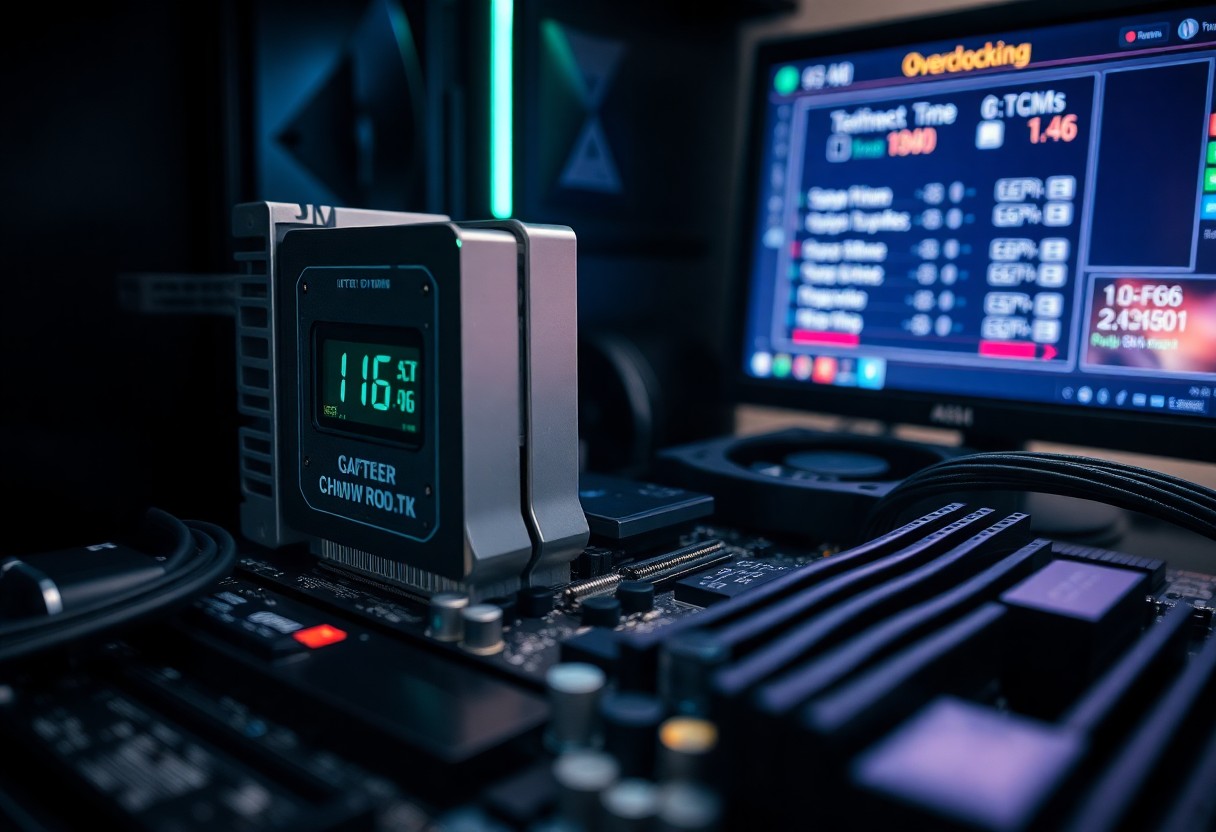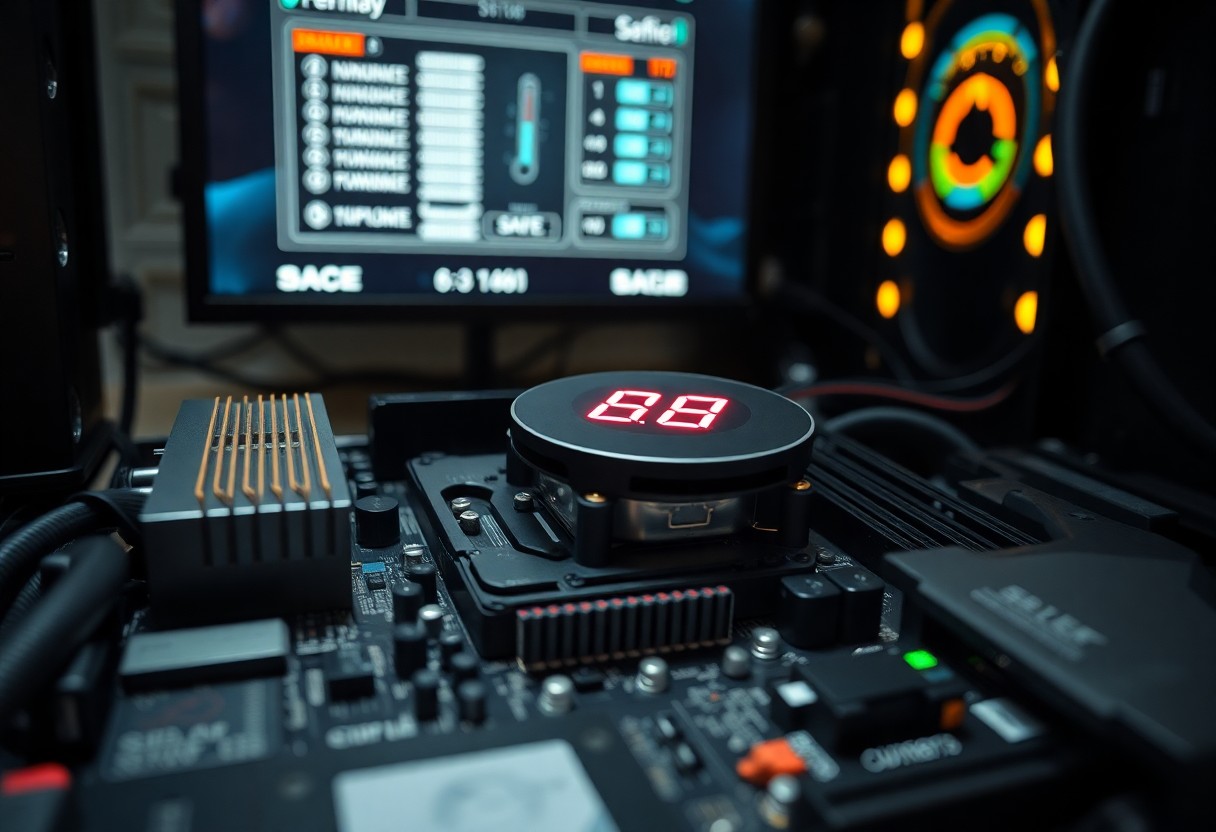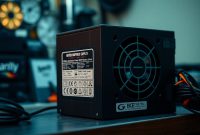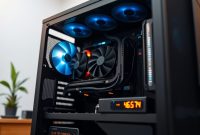Overclocking your CPU can significantly enhance your computer’s performance, allowing you to achieve higher speeds and better responsiveness for gaming, video editing, or other demanding tasks. In this guide, you will learn vital techniques and best practices to safely push your CPU beyond its factory settings while maintaining system stability and longevity. By understanding the risks and rewards, you can confidently explore the world of overclocking and unlock your computer’s full potential. Let’s examine the basics and get your journey started on the right foot.

Understanding Overclocking
For many enthusiasts, overclocking represents the ultimate way to push their CPU’s limits, enhancing performance beyond factory settings. It’s a practice that allows you to boost the clock speed of your processor, which can lead to faster computing and improved gaming experiences. However, this need for speed comes with responsibilities, including the need for careful monitoring and cooling solutions to ensure your hardware remains stable and safe.
What is Overclocking?
With overclocking, you increase the operating speed of your CPU beyond its manufacturer specifications. This is achieved by adjusting settings in the BIOS or using specialized software, allowing more processing power and potentially better performance for demanding applications or games.
Types of Overclocking
There are several methods for overclocking your CPU, each varying in complexity and risk.
- Manual Overclocking: Involves adjusting settings directly in the BIOS.
- Automated Overclocking: Software solutions optimize settings for you.
- Turbo Mode: Temporary boosts during demanding tasks, often automated.
- Multiplier Adjustment: Changing the CPU multiplier to increase speed.
- Voltage Adjustment: Tweaking voltage for stability at higher speeds.
Knowing the type of overclocking that suits your needs will help you achieve optimal performance while maintaining system stability.
| Type | Description |
| Manual Overclocking | Direct BIOS adjustments for control and precision. |
| Automated Overclocking | Utilizing software to simplify the overclocking process. |
| Turbo Mode | Temporary performance boost during intensive tasks. |
| Multiplier Adjustment | Increasing the CPU multiplier for higher speeds. |
| Voltage Adjustment | Changing voltage levels to ensure stability. |
A solid understanding of the different types of overclocking will enhance your overclocking journey. The method you choose may depend on your comfort level with technical details and the cooling capabilities of your setup.
- Manual control offers precision but requires expertise.
- Automated options are user-friendly for newcomers.
- Turbo mode provides a safety net by bolstering performance temporarily.
- Multiplier adjustments are efficient but require system compatibility.
- Voltage changes can unleash power, but risk instability if done incorrectly.
Knowing about these types will help you make informed decisions as you begin on your overclocking journey.
Factors to Consider Before Overclocking
Some key aspects to evaluate before proceeding with overclocking include:
- Your CPU model
- The motherboard specifications
- Your power supply capabilities
- The cooling system
- Your experience level
Thou must ensure that these elements align to achieve a safe and effective overclocking experience.
CPU Compatibility
The ability to overclock your CPU largely depends on its compatibility with your motherboard and the chipset. Not all processors support overclocking, so it’s necessary to verify if your specific model allows for modifications. Researching compatibility can prevent potential damage to your hardware and ensure a smoother overclocking process.
Cooling Solutions
Little attention should be paid to the cooling solutions you have in place, as effective thermal management is vital when overclocking. High-performance CPUs generate more heat when clock speeds increase, making adequate cooling necessary to maintain system stability and longevity.
Factors such as air coolers, liquid cooling systems, and thermal paste quality should be weighed carefully. Air coolers can be sufficient for moderate overclocking, while liquid cooling solutions offer more efficiency for aggressive tweaks. Ensure the cooling solution you choose can handle the additional heat generated to keep your CPU operating within safe temperature limits.
Step-by-Step Guide to Overclocking Your CPU
Now that you’re ready to enhance your CPU performance, follow these steps to ensure a smooth overclocking process. Each phase is important, so take your time to understand and execute each carefully:
| Step | Description |
|---|---|
| 1 | Preparing Your System |
| 2 | Adjusting Settings in BIOS |
| 3 | Stability Testing |
Preparing Your System
Your first step in overclocking involves ensuring that your system is optimized and free from potential issues. This includes updating your motherboard BIOS to the latest version, cleaning your CPU cooler, and ensuring adequate airflow in your case.
Adjusting Settings in BIOS
Your next step takes you into the BIOS, where you’ll adjust parameters like CPU multiplier and voltage. These settings will help you boost your CPU’s performance while keeping temperatures manageable.
Adjusting these settings can feel daunting, but it’s imperative to approach this with caution. Start by increasing the CPU multiplier incrementally and test the system’s response. Pay close attention to the voltage; a slight raise might be needed, but avoid going overboard to maintain stability and prevent overheating.
Stability Testing
On completing the adjustments, you’ll need to validate your overclocking efforts through stability testing. This helps ensure that your system runs smoothly at the new settings without causing crashes.
Testing involves using specialized software to stress your CPU and monitor temperatures under load. Tools like Prime95 or AIDA64 can be helpful in this phase; keep a close eye on system temperatures and performance to confirm that everything is functioning as expected before using your system regularly.
Tips for Safe Overclocking
Your CPU can deliver impressive performance when overclocked safely by following some guidelines. Ensure you understand your hardware limits and monitor system stability regularly. Here are some tips:
- Always check compatibility with your motherboard.
- Invest in quality cooling solutions.
- Perform stability tests after each adjustment.
- Take detailed notes of your changes.
This approach will help avoid potential pitfalls while enhancing performance.
Monitoring Temperatures
Any effective overclocking strategy includes careful monitoring of your CPU temperatures to prevent overheating and damage. Utilize reliable monitoring software to watch temperature changes during stress tests and regular usage. Here’s a helpful breakdown:
| Normal Idle Temperature | 30-40°C |
| Under Load Temperature | 70-85°C |
| Maximum Safe Temperature | 90°C and above |
Incremental Adjustments
Now is the time to implement incremental adjustments for a safe overclocking experience. Start with small frequency increases and gradually gauge the system’s performance and temperature. This method allows you to identify the sweet spot for your CPU without pushing it too hard too quickly.
Incremental adjustments are important because they help you fine-tune the overclocking process, minimizing the risk of system instability or damage. By slowly increasing the clock speed and testing your system after each adjustment, you can ensure optimal performance while remaining within safe operational limits. This measured approach not only enhances your CPU’s performance but also contributes to longevity and reliability.
Pros and Cons of Overclocking
After exploring the basics of overclocking, it’s important to weigh the benefits against the potential downsides. Here’s a breakdown of the pros and cons to help you make an informed decision:
| Pros | Cons |
|---|---|
| Increased performance in CPU-intensive tasks | Higher temperatures that require better cooling |
| Better gaming experience with increased frame rates | Possible system instability and crashes |
| Cost-effective performance boost without hardware upgrade | Potentially voiding the CPU warranty |
| Customization and fine-tuning of your system | Power consumption increases |
| Improves skills and understanding of computer hardware | Requires careful monitoring of system health |
Benefits of Overclocking
On overclocking, you can experience noticeable improvements in performance, especially during demanding tasks like gaming or video editing. This performance boost often allows you to run applications more efficiently without the need for a hardware upgrade, maximizing the potential of your existing components. Additionally, overclocking offers a chance to fine-tune your system, enhancing your understanding of how computer hardware works.
Risks and Drawbacks
One downside to overclocking is the increased thermal output, which can lead to overheating if not properly managed. This can result in system instability, crashes, or even permanent damage to your components. Furthermore, overclocking often involves pushing your hardware beyond its factory settings, which can void warranties and escalate power consumption, adding to your energy costs.
The potential for increased temperatures can also create a ripple effect, requiring better cooling solutions and more energy consumption. If your setup lacks adequate airflow or cooling, the risk of thermal throttling or component degradation becomes more significant. It’s important to consider both the performance gains and the requirements for safely managing these risks, as they can significantly impact your overall experience and hardware longevity.
To wrap up
Conclusively, mastering the art of CPU overclocking can greatly enhance your system’s performance if done responsibly. By following safe practices and ensuring proper cooling solutions, you can unlock your processor’s potential while minimizing risks. As you venture into overclocking, keep in mind the importance of benchmarking and monitoring your hardware’s temperatures. With patience and care, you can enjoy the benefits that overclocking brings to your computing experience, making it more efficient and enjoyable.



